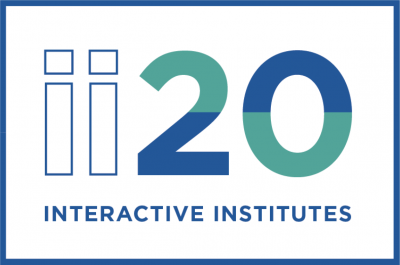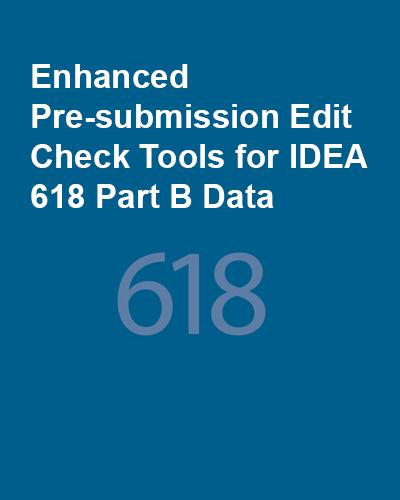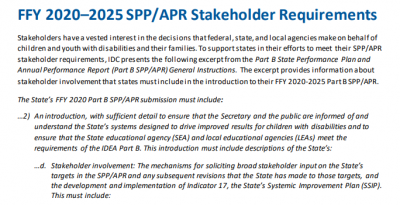
Resource Library
Guides. Briefs. Toolkits. Quick reference information. IDC and its partners created these data quality resources to help states better prepare to address their existing or emerging IDEA data quality needs. Use our search and filtering tools to navigate the library.
Resources 43 - 49 of 88
Format: Applications and Spreadsheets
Coordinated Early Intervening Services (CEIS) Fiscal and Student Data TrackerThe Coordinated Early Intervening Services (CEIS) Fiscal and Student Data Tracker is a set of four tools SEAs can use with their districts, schools, and providers to assist them in tracking the finances, services, and student data associated with CEIS. IDC and CIFR produced the CEIS Tracker. The resource also includes an instructions document or user's guide for more information about when and how to use the CEIS Tracker.
Format: Trainings
ii20 Session Presentations and HandoutsThe Interactive Institutes 2020 – Building and Sustaining a Culture of High-Quality Data provided opportunities for participants to take a deep dive into data quality topics to learn about data culture change. Participants were able to discover best practices to improve data collection, reporting, analysis, and use. They also engaged with peers and TA providers about trending data quality topics. Each session presented powerful ideas and actionable plans to improve work processes and data quality.
Format: Applications and Spreadsheets
SEA Edit Check and Data Display Tools for IDEA 618 Part B DataIDC presents the SEA Edit Check and Data Display Tools for IDEA 618 Part B Data to help states prepare their Part B data submissions. States can use these tools to review the contents of their IDEA 618 EDFacts Part B personnel, exiting, discipline and child count and educational environment data for children ages 3–5 (FS089) and students ages 6–21 (FS002) prior to submission to the EDFacts Submission System or ESS. The tools apply edit checks and identify potential errors in subtotals or totals in the data files. In addition, the tools provide user-friendly summaries of the 618 data. The tools are enhanced versions of the SEA Edit Check and Data Display Tools for personnel, exiting, discipline, and child count and educational environment data. The main difference is the enhanced edit check tools require states to directly copy and paste the EDFacts data files they will submit to ESS as opposed to manually entering data into an Excel file in a format that is different than the one required for submission to ESS.
Format: Quick Reference
FFY 2020-2025 SPP/APR Stakeholder RequirementsThe FFY 2020-2025 SPP/APR shares the stakeholder requirements for the FFY 2020-2025 SPP/APR in a simple one page format. This resource can be used with state staff and other partners when planning for the SPP/APR.
Format: Quick Reference
Templates for Part B SPP/APR Stakeholder Involvement and Target SettingStates can use the Organizer Template for Part B SPP/APR Target Setting to briefly document information for consideration when setting new SPP/APR targets for all indicators in the FFYs 2020–25 SPP/APR collection. States can supplement this overview template with the Indicator Organizer for Part B SPP/APR Stakeholder Involvement and Target Setting, which is designed to capture more detailed information on stakeholder involvement in setting targets for individual SPP/APR indicators.
Format: Applications and Spreadsheets
618 Data Collection CalendarWho doesn't love a good calendar? This tool serves as a reference for states as they plan for the timely and accurate submission of their 618 data collections. Simply select a month to view the data collection and corresponding tasks and activities for that month, or select a report to view a monthly breakdown of activities and related resources.
Format: Applications and Spreadsheets
EDFacts IDEA Discipline Data InfographicThe EDFacts IDEA Discipline Data Infographic provides basic information about the EDFacts file specifications states use to submit IDEA Discipline data to the U.S. Department of Education. The infographic outlines details about Discipline data for children and youth with disabilities ages 3 through 21 that states must include in their annual submission of EDFacts files FS005, FS006, FS007, FS088, FS143, and FS144.








